
|   |

|   |
ANITA SAYS.....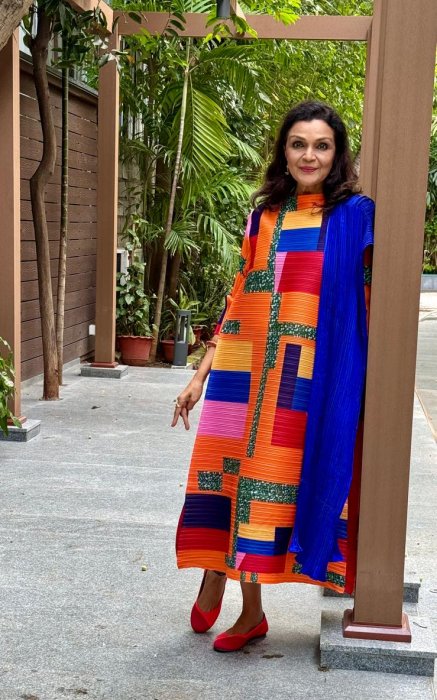
It occurs to me that courage comes from the same place as fear, and where there is fear, there is the possibility of courage. - Pádraig Ó Tuama, Irish poet and theologian In the Shelter: Finding a Home in the World Welcome to October - the changing season, the clocks turning back in North America and our grand silks and festive wear emerging from closets. All around me in Chennai and elsewhere in India, the spirit of Navaratri has begun. Festivals in dance, music and theatre - starting at 5am with classical music, lighting of the lamps in the evening, display of Golu dolls in South India, the fantastic swirling energy of Garba in the north - everything feels so alive, electric and festive. I am sure the festival season has also begun with diaspora circles all over the world. It really is a delicious time of the year - perhaps my favourite season. I begin in NYC... the BIG APPLE which has been the western world's most important center for dance for many decades. And for the past three weeks, all eyes were on Indian dance events that crowded the calendar. ERASING BORDERS THROUGH DANCE The 17th edition of the IAAC ERASING BORDERS dance festival was the September marquee event. The organisation IAAC stands for INDO AMERICAN ARTS COUNCIL and was founded nearly 30 years ago by the enthusiastic and ebullient Aroon Shivdasani who wanted to bring a professional face to the various branches of creative expressions from India. It was an organic progression for IAAC to include DANCE as a category to its existing roster of film and literature festivals. Beginning with inviting artistes from India, the festival has consciously made choices closer to its geography. Increasing flight costs for international artistes, visa restrictions and the constant subsidies needed to manage and produce dance became a deterrent over the years. The digital edition of the ERASING BORDERS Dance Festival has been able to commission and encourage new ways of filming and showing dance - creating meaningful collaborations between film makers and performers. This genre has been very well received but online viewing overall has waned since the pandemic and the excitement transferred to the physical offline stage shows. The 2024 edition featured names that have a significant social media following - dancers who have embraced a new age lens on choreography, performance and presentation. The shift in classical dance aesthetics was seen in the fast paced performances of Kumar Sharma, Anugraha Sridhar, Vedya Spurthi, Fuschia Dance Company and others. Each of them brought a firecracker energy to the cozy Alvin Ailey theatre. In contrast, the measured and mature abhinaya of Ramya Harishankar came like a soothing balm- her solo presentation evoking memories of her abhinaya guru Kalanidhi Narayanan. The star feature of the festival this year were the Kathak duo Nirupama and Rajendra who concluded their hectic USA tour with this NYC appearance. The Alvin Ailey theatre has been the venue for the Erasing Borders dance festival for several years and the beautiful multi story building with sunlit studios is the envy of many in the dance world. Alvin Ailey was a brilliant modern dance student of Lester Horton and today his legacy lives on through his many iconic and culturally pathbreaking works and the skillful management of his students. For the IAAC organisers, presenting an annual Indian dance festival in the world's capital of dance could perhaps be a moment to pause and seek a deeper engagement as curators and presenters. More attention could be placed on making brief announcements, tightly scripted introductions, shorter pauses between items and overall time keeping. Breathless dancers trying to speak soon after finishing a piece can be averted by someone else taking over the explanations. The success of the 17th edition of ERASING BORDERS cannot be ignored. However, for the generation of young dancers who live and create in the USA, I want to state that this moment of euphoria - of packed theatres, bustling audiences, high energy buzz in the foyers in mainstream venues - with excited chatter in many Indian languages, endless selfies and laughter - has not happened overnight or even in a decade. This moment has been a long time coming. Through the 1950's, 60's, 70's, 80's, and 90's, there were so many elders who laboured, taught and performed in small classrooms, basements, temples, churches, synagogues to bring attention to the variety of Indian dance forms. There were several short performances within department stores like Bloomingdale's (I danced in the furniture section of the department store during the Festival of India in 1985 - sponsored by Air India). So, today when Bharatanatyam, Odissi and Kathak are featured in mainstream festivals and theatres like the JOYCE, the Alvin Ailey Citigroup theatre and the Kennedy Centre - these moments have been more than 50 years in the making. 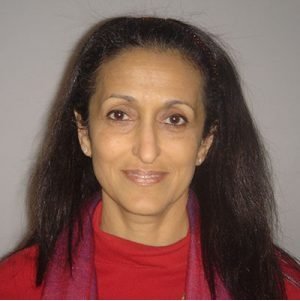 Uttara Asha Coorlawala Now, with Suman Gollamudi as Executive Director - combined with a very capable team of curators like Deepshika Chatterjee, Sruthi Mohan and senior performer / academic Uttara Asha Coorlawala, ERASING BORDERS is in safe hands. It has established itself as the most important Indian dance festival in the USA and an event that is the highlight for every emerging dancer and Rasika.  Rajika Puri Here I wish to acknowledge the enormous work done by Rajika Puri, who, for years, through her philanthropy, passion and relentless drive, invited several influential presenters and cultural gatekeepers to her home to watch Indian classical dance. Rajika has supported numerous dance organisations, visiting artistes and continues to present and produce DANCING FOR THE GODS, a classical dance festival every Spring in NYC. Rajika, like Maya Kulkarni and Uttara Coorlawala are the seniors in NYC and represent the TRI DEVIS- Godmothers of Indian dance in their individual and collective capacities. This analogy is apt with the rise of the Goddess this Navaratri season. 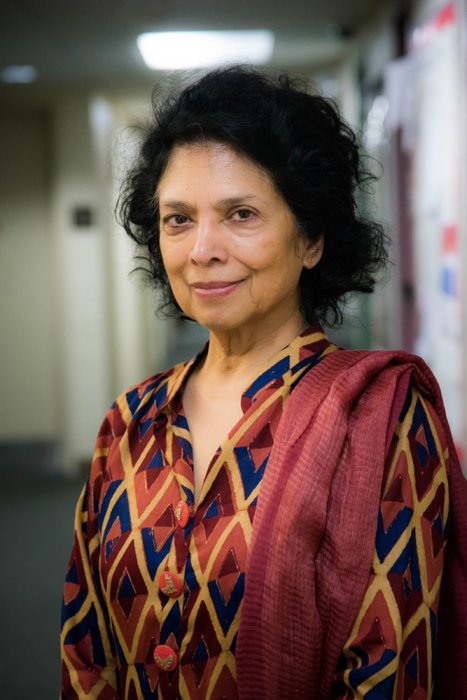 Maya Kulkarni I also would like to take a moment to talk about Maya Kulkarni. I met Maya during my decade in New York when she was a busy academic and university professor. Her total belief in tradition always shone through her frequent Bharatanatyam performances and talks. Trained by hereditary gurus, I least expected her to morph into her current AVATAR as a mentor, choreographer, curator and godmother to so many dancers more than a generation apart. Her thoughtful comments and keen eye for shapes, forms, and kinetics have coalesced into a new dance form she calls Shilpa Natanam. Beautiful examples of her evolving vision can be seen in the dancing of Mesma Belsare and Sonali Skandan. VALLI SPEAKS 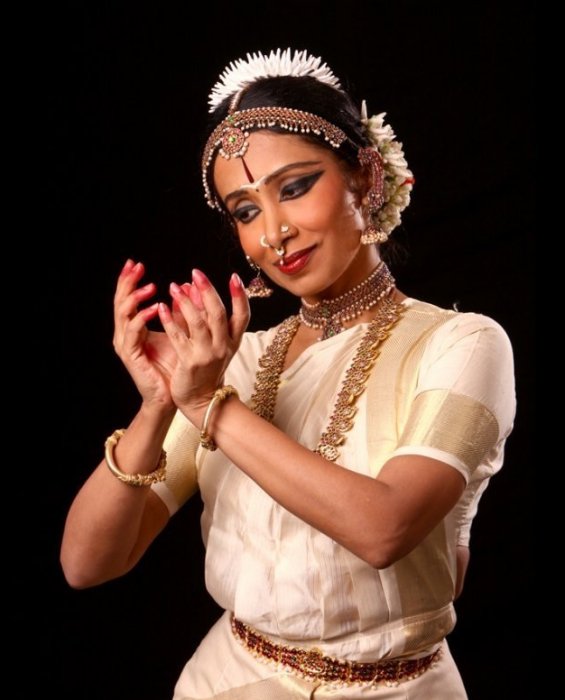 Alarmel Valli At the New York Public Library ( NYPL) it was Alarmel Valli's turn to be this year's featured speaker for the Dr Sunil Kothari annual lecture. The earlier editions featured Bijayini Satpathy and Malavika Sarukkai. Valli was at her eloquent best. Her short hair and still youthful appearance attracted an older generation who have been influenced by her artistic brilliance. Valli articulated her early years of teaching from great gurus like Chokkalingam Pillai and Subbaraya Pillai and explained how the architecture of Bharatanatyam slowly became a personal signature for her. In her own words "how straight lines became fluid lines". Valli's storied life, replete with world travels and multiple awards - sits lightly on her slim frame. She is effortlessly articulate and always compelling to listen to and watch - her deep conviction about Bharatanatyam and its immense possibilities never failing to move even the toughest cynic. NEW ROLES FOR DANCERS 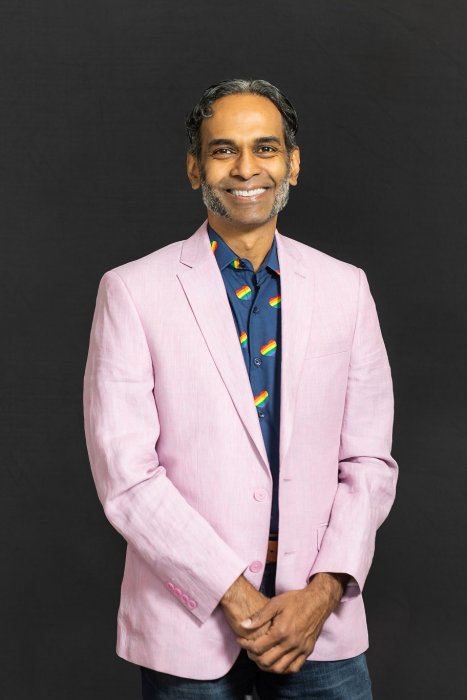 Daniel Singh Moving away from NYC, I turn the spotlight elsewhere in the USA onto two Bharatanatyam artistes who have assumed administrative roles in dance companies. Daniel Singh, one of the best presenters of Indian dance in the Washington DC area - take it from me, I know - is now the Artistic Director of Anuradha Nehru's KALANIDHI DANCE. Daniel looks to his role as "opening up vistas of possibilities in movement. I now have a broader palette to work with", he says. " I am excited to be in dialogue with dancers who bring in their ideas and impulses around social themes like Me Too, Black Lives Matter, Ending genocide and Dalit empowerment." 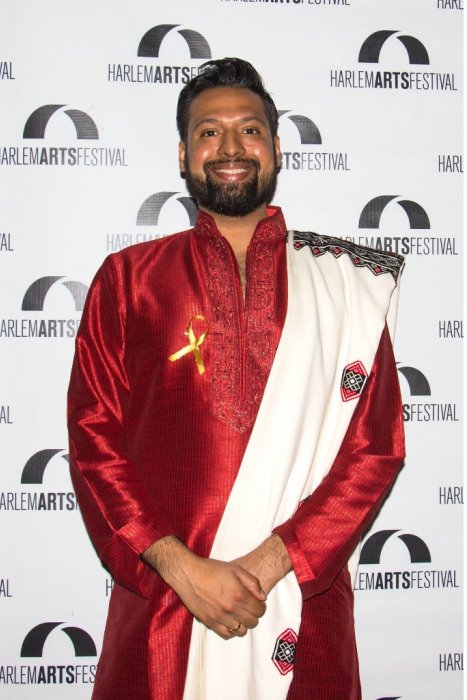 Kiran James A former New Yorker who has moved to Chicago is Kiran (Rajagopalan) James - now Executive Director of KALAPRIYA FOUNDATION. From being a Bharatanatyam dance school, the organisation has expanded into visual arts, music, theatre and literature. Kiran says his main challenge is "finding and training teaching artistes of South Asian descent or those trained in South Asian art forms. Adapting our existing systems of dance pedagogy into a viable curriculum for schools and helping dancers earn a minimum living wage." Under Kiran's leadership, two performances were presented - THROUGH FISH EYES (Prakriti Arts/Kasi Aysola) and SHE AUSPICIOUS (Mythili Prakash). It is both interesting and exciting to see dance/arts organisations moving to the next step of development and management with the founder and main guru making space for professional leadership. CULTURAL MARKERS Leaving the USA and returning to India, I attended the 50th anniversary of Guru Chitra Visweswaran's academy Chidambaram Academy of Performing Arts - CAPA. It was an elegant and beautifully curated two day festival called SAMANVAY which embraced Chitra's many interests in history, faith, puppetry, neo classical music and of course, dance. Held at Mylapore's Bharatiya Vidya Bhavan auditorium, the Vedic chanting opened the evening, followed by the dance production RAMA-AYANA and concluded with religious discourse - all flowing smoothly without garrulous speeches and the tiresome shawl draping. A graceful Sudharani Raghupathy lit the ceremonial lamp in front of an overflowing hall - filled with dancers and musicians of all generations. 50 years - half a century of creating and developing a career and a brand is no mean feat! The celebration was a testament to Chitra Visweswaran and CAPA's unrelenting commitment to not just dance teaching but outreach activities for special needs children, while encouraging her students to find their own voice and stride in their dance art! 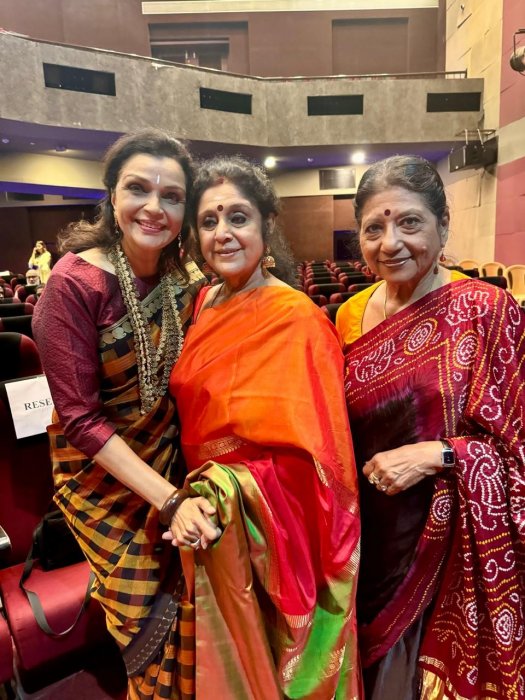 With Chitra Visweswaran & Hema Rajagopalan We were the fortunate generation to witness the sparkle, dazzle and joy that Chitra brought to her dance when she moved from Kolkata to Madras/Chennai in the 1970's after marriage to musician R Visweswaran. When she leaped onto the stage, it crackled with electricity. She took the classical Vazhuvoor style of Bharatanatyam and made it her own with a distinct pedagogy that is recognisable in her senior students. She was also the first among the divas to simplify her costume and jewellery - dispensing with the elaborate head gear and layered necklaces. Her braiding of literature, music, physical theatre and performance was a singular contribution to the modern history of Bharatanatyam. TEAM NARTHAKI congratulates Guru Padmasri Chitra Visweswaran and CAPA on this important occasion! A SOMBRE ANNIVERSARY This month marks a full year of the conflict in the Middle East. With no end in sight, and the violence index off the charts, innocent children have been severely affected. 5 months ago, dancer Aranyani Bhargav and dance historian Donovan Roebert collaborated to bring attention to this tragedy. Many dancers in India and overseas organised events and performed for the cause. The result has been significant donations made to a specialty children's hospital in the Middle East focused on helping the suffering children. Some of the artistes who participated expressed their satisfaction at having made a conscious decision to be a part of the solution through their art. Dance cannot stop a war but dancers CAN use their art to bring attention to a cause. Often these efforts are ignored by the larger public. 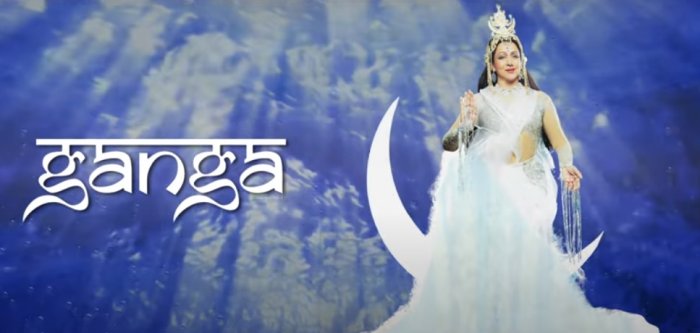 Hema Malini When film star/ dancer Hema Malini performed her extravagant production GANGA in Benares, she faced trolling and criticism on social media. "Can dancing on the ghats clean a polluted river?" asked netizens. Hema Malini expressed her concern through her artistic practice. Artistes are citizens first and CAN claim space to comment upon societal issues in ways they feel comfortable. FAITH AND THE ARTS Faith is personal and can become a flashpoint when yoked to social practice and the arts. Indian classical dance is seeped in Hindu narratives and sacred literature. This does not necessarily have to confine all classical dancers into the Right wing. The Left is too quick to confine classical dancers as Right wing if their art is steeped in myth and religion. One CAN be religious and classical while questioning and even radical in reinterpreting and recasting these time honoured stories. YOGA has morphed into CHRISTIAN YOGA and JEWISH YOGA in the USA. With courses, certification and retreats to "deepen one's connection to faith through asana practice." I even saw some Muslim Yoga practitioners on Instagram. How does one amputate the roots of this globally popular practice from sage Patanjali, the progenitor who is believed to be the avatar of Adisesha - the sacred serpent guarding Lord Vishnu? With so many versions of Yoga in practice globally, it is now certainly far from its Indian/Sanatan roots. The physical practice of the "asanas," the emphasis on the breath and "pranayama" practices are proven to be beneficial to physical and emotional well- being. It is perhaps better for these alternate yoga methods to focus on the physical rather than promise spiritual enlightenment. Likewise, in Bharatanatyam, there is a genre called CHRISTIAN BHARATANATYAM. An entire repertoire based on stories and narratives from the Bible. Several well trained students graduate each year from the popular Kalai Kaveri College in Tamilnadu. However, this has not happened without pushback. The recent national outrage about the adulterated sacred "laddoo prasad" at the Tirupati Balaji temple being contaminated with animal products, has many asking "what is the connection between temple, practice, ritual, tradition, belief and the sacred origins of Bharatanatyam?" It is now a global form and thousands of students from various faiths across geographies have joyfully embraced it along with its Hindu centric repertoire without friction or tension. There are now several religious and social commentators who are warning the public about this "appropriation" and "hijacking". The Madras Music Academy's annual lecture series in December has the introduction of multi-faith music, Oppari (mourning traditions) and some subaltern genres- perhaps for the first time. This break with tradition was to be expected with the controversial T M Krishna as the presiding presence this year. Does this programming serve any purpose other than to provoke? Will the staid committee members of the Academy continue this DEI programming next year? Is the alarm and anger with many loyal rasikas justified? Should we not, as a community, be celebrating the global appeal and strength of the dance, music and meditative forms like Bharatanatyam and Yoga instead of arguing about how it is being harnessed and used? BACK ON STAGE 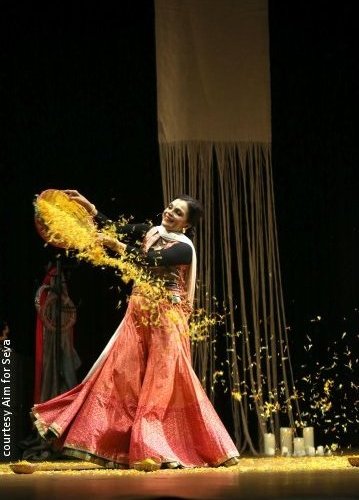  A Million Sitas After 5 months of being sidelined with a freak wrist injury, I stepped back on stage last week. A private event for a women's organisation saw my return to one of my favourite dance theatre productions, A MILLION SITAS. The hotel ballroom was packed and I was filled with flutters of excitement and nervousness. After 50 years and more of being in front of the lights, this "butterfly" sensation made me feel alive and centred within my body and mind again. This SITA production has travelled to 3 continents and completed nearly 50 shows. At this moment, the Lord Rama temple in Ayodhya holds a statue of a very young Ram Lalla without Sita's idol. The RAMAYANA has 3000 established versions in circulation. This eternal tale and my presentation continues to reflect the bends and twists of political decisions. AND there is no greater HIGH than dancing! Gratitude! And now to the answer to one of the interesting questions from last month's podcast. QUESTION: How does one make the most of a rehearsal when time is very short? MY ANSWER: When there is a time crunch, it is important to hit the ground running. That is, everything needs to happen at once. Quickly. So try this. Dance the FIRST TWO MINUTES of each of 6 items. Alarippu, Jatiswaram, Varnam, Padam, Tillana, Slokam. One after the other in rapid succession. Just like High Intensity Workouts. See if your mind and body can keep up with this rapid switching. Mix up the order.. Tillana - Padam - Jatiswaram - Slokam - Alarippu. Keep that mind going and the body working NON STOP. Switching rapidly between rhythms, subject and intention keeps the mind alert and in the present. This may not be an "ideal" rehearsal but it will shake up your entire system and I guarantee a whole new state of excitement. Another method is to take an emotional piece - an Abhinaya item- and DO IT BACKWARDS. That is, start from the end verse where the lyrics come to a conclusion and the dramatic intention is at its highest.. then work your way to the centre and then to the beginning. How does Abhinaya work in reverse? Can the pulling back slowly be controlled? This kind of practice will make you aware of how the emotional arc is created. These are only suggestions to put a lot of fun and excitement back in your daily practice. Because, let's face it, rehearsals can sometimes be tedious and our dance art is centred upon the concept of "Ananda - Joy". These are the moments when I feel that someone is listening to or reading my views. So keep those comments and questions coming. 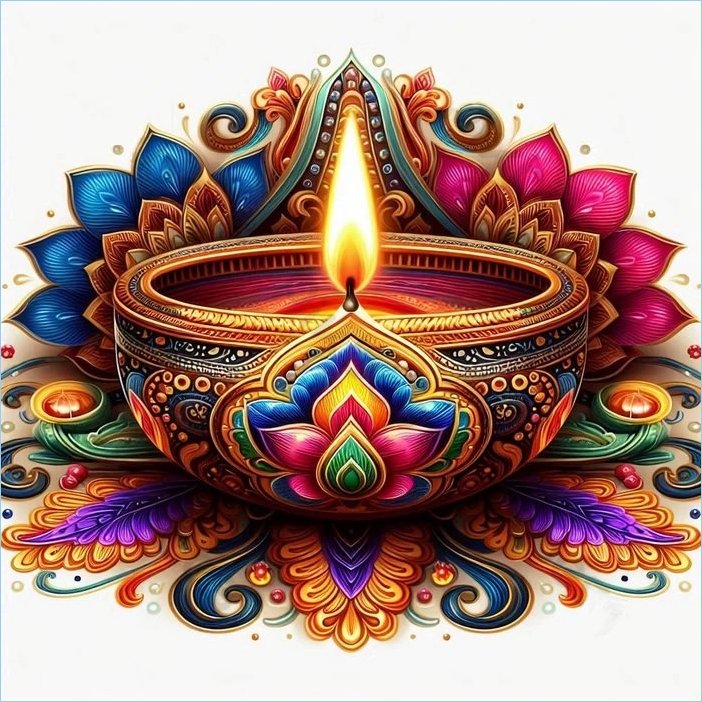 Not just Navaratri but Deepavali also falls in October. On the very last day - October 31st. It is a glorious time to mark the rise of female energy and to hold our loved ones close. The streets of my hometown are filled with colour, noise and the numerous mythological character dolls that will decorate many homes. There is so much dance and music being celebrated all over India. The happiness index is on the rise. Even though the world outside continues to spiral into chaos! Celebrate - be kind to yourself and to your loved ones. Light up your lives! With positive affirmations, hope and determination. Embrace impermanence and practice empathy. Feel gratitude for each new day! Thank you for reading this editorial and for all those who listen to the podcast. Do not forget to subscribe - Share it and tell your friends. Until next time! Dr Anita Ratnam anitaratnam.com Connect with us on Instagram and Facebook Post your comments |